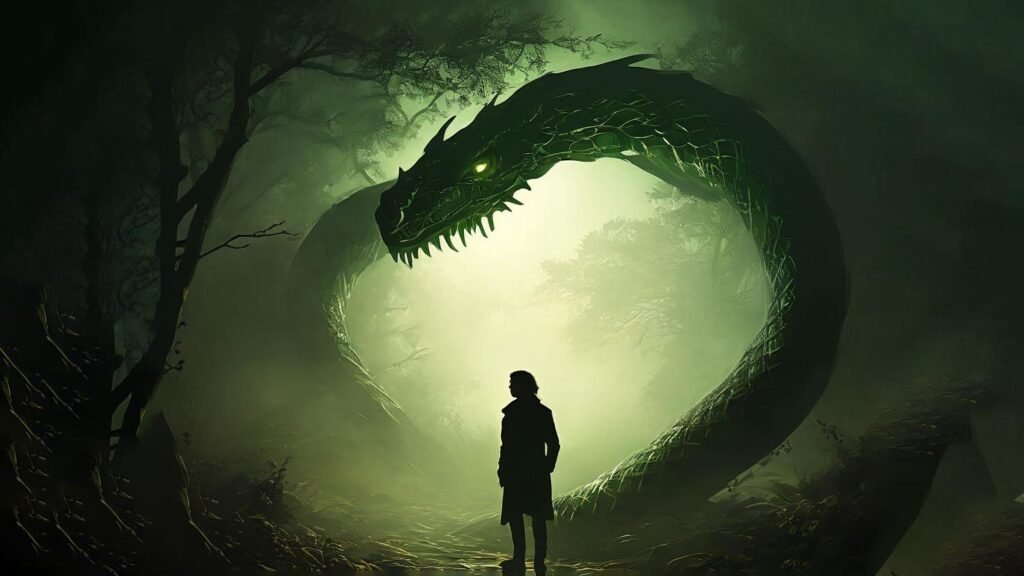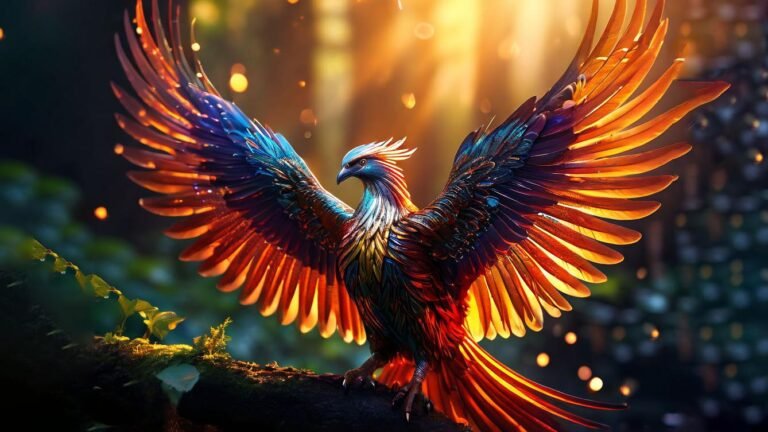The Ouroboros, an ancient symbol depicting a snake eating its own tail, captivates and intrigues minds across cultures. This metaphorical image has found its way into numerous mythologies, spiritual traditions, philosophies, and contemporary art. In this article, we delve into the rich meaning and symbolism embedded in the Ouroboros, exploring its diverse interpretations and cultural significance.
Key Takeaways:
- The Ouroboros symbolizes the eternal cycle of life, death, and rebirth.
- Various ancient cultures and traditions embraced the Ouroboros, infusing their unique perspectives.
- The Ouroboros embodies unity, wholeness, and the interconnection of all things.
- Modern interpretations of the Ouroboros continue to emerge, resonating with different contexts and audiences.
Definition of the Ouroboros symbol
The Ouroboros represents a serpent or dragon consuming its own tail, forming a circular and self-contained entity. This symbol often appears as a closed loop, illustrating perpetual unity and the eternal nature of existence.
Historical origins and significance
The roots of the Ouroboros can be traced back to ancient civilizations, including Egypt and Greece. These cultures embraced the symbol for its profound implications of cyclical time, regeneration, and cosmic order.
Popular cultural references and depictions
The Ouroboros has permeated popular culture, featured in literature, art, tattoos, and even movies. Its intriguing image continues to captivate people’s imagination, sparking curiosity about its deeper meanings and significance.
Symbolic Interpretations of the Ouroboros
Ancient Egyptian beliefs
In ancient Egypt, the Ouroboros symbolized the cyclical nature of life, death, and rebirth in relation to the sun, providing a framework for understanding the universe’s rhythm and continuity. It represented the journey of the sun from dawn to dusk, reflecting the eternal cycle of existence.
Greek mythology and the Ouroboros
Greek mythology embraced the Ouroboros as a symbol of eternal return, rebirth, and the interconnectedness of gods and mortals. The serpent devouring itself represented the ever-recurring cycles of creation and destruction, symbolizing the evolving nature of the cosmos.

Unity and wholeness
Alchemical symbolism
In alchemy, the Ouroboros embodied the concept of unity and wholeness. It represented the union of opposing forces, such as masculine and feminine, light and dark, or spirit and matter. This symbol illustrated the alchemist’s quest for self-transformation and integration.
Jungian psychology and the Ouroboros
World-renowned psychologist Carl Jung associated the Ouroboros with the process of psychological individuation. According to Jung, the Ouroboros epitomized the integration of the conscious and unconscious aspects of the self, leading to a state of wholeness and individuation.
Timelessness and infinity
Eastern philosophies and the concept of time
Eastern philosophies, such as Hinduism and Buddhism, explored the concept of timelessness and the illusory nature of linear time. The Ouroboros aligned with these philosophies, representing the cyclical nature of existence and the eternal present moment.
Modern interpretations of the Ouroboros
In contemporary contexts, the Ouroboros has been associated with concepts like eternal love, infinite wisdom, and the eternal pursuit of knowledge. Artists, writers, and thinkers continue to reinterpret and expand upon the symbolism of the Ouroboros, infusing it with new meaning.
The Ouroboros in Different Cultures and Traditions
Ancient Egypt
The serpent god Apophis
Among the ancient Egyptians, the serpent god Apophis played a significant role in connecting the Ouroboros with creation, destruction, and rebirth. Apophis represented chaos and the constant threat to the cosmic order, while the Ouroboros symbolized the cyclical victory of order over chaos.
Ouroboros iconography in ancient Egyptian art
Ancient Egyptian art frequently depicted the Ouroboros, particularly in the funerary context. It served as a powerful reminder of life’s cyclical nature, the continuity of existence, and the hope of renewal in the afterlife.
Norse mythology
1. The World Serpent Jormungandr
Norse mythology introduced the World Serpent Jormungandr, a colossal serpent encircling the Earth and swallowing its own tail. Jormungandr symbolized the chaotic forces of nature and was an integral part of the Norse cosmology. Its connection to the Ouroboros represented the eternal struggle between order and chaos.
2. Ragnarok and the Ouroboros connection
In Norse myth, Ragnarok was the apocalyptic event where gods and giants clashed, resulting in the destruction and subsequent rebirth of the world. The Ouroboros played a significant role in Ragnarok, representing the cyclical nature of existence, as Ragnarok marked the end of one world and the beginning of another.
Aztec civilization
Quetzalcoatl, the feathered serpent
The Aztecs revered Quetzalcoatl, the deity representing the feathered serpent. Quetzalcoatl was associated with creation, wisdom, and fertility. The Ouroboros symbolism became intertwined with Quetzalcoatl, representing the inseparable connection between life and death, creation and destruction.
Ouroboros imagery in Aztec artifacts
Aztec artifacts and art often depicted the Ouroboros in various forms. It was seen on temples, masks, and other objects, symbolizing the cyclical nature of time and the continuous cycle of life, death, and rebirth.
Philosophical and Metaphysical Interpretations of the Ouroboros
Alchemical symbolism and the Ouroboros
Hermeticism and alchemy embraced the Ouroboros as a powerful symbol within their practices. Alchemists interpreted the Ouroboros as the cycle of transformation and the goal of achieving spiritual and material perfection through the process of transmutation.
The Great Work and the Ouroboros
The Great Work, a central concept in alchemical teachings, referred to the alchemist’s pursuit of self-realization and the transformation of base materials into spiritual gold. The Ouroboros symbolized this process of inner alchemy, where the individual sought to unify their opposing aspects and achieve a state of wholeness.
Eastern philosophy and spirituality
Buddhist concepts of interconnectedness
Buddhism emphasizes the concept of interconnectedness, where all beings and phenomena are interdependent. The Ouroboros symbol finds resonance in this philosophy as it represents the cyclical nature of existence, with each part connected and influencing the whole.
Hindu symbolism and the cycle of existence
In Hinduism, the Ouroboros aligns with the concept of samsara, the endless cycle of birth, death, and rebirth. It represents the idea that existence is an unending process of creation, preservation, destruction, and renewal, with the ultimate goal of liberation from this cycle.
Modern Applications and Popularity of the Ouroboros
A. Occult and mystical associations
Magical orders and Ouroboros symbolism
Within various magical orders and occult traditions, the Ouroboros holds significant importance. It symbolizes the cycles of magic, the infinite nature of knowledge, and the pursuit of spiritual enlightenment.
New Age spirituality and the Ouroboros
New Age spirituality has embraced the Ouroboros as a symbol of personal growth, transformation, and self-realization. It represents the continuous process of evolving, shedding old aspects of oneself, and embracing new beginnings.
Contemporary art and literature
Ouroboros in visual art
Contemporary artists often incorporate the Ouroboros into their artwork, exploring themes of interconnectedness, sustainability, and the cycles of life. The symbol serves as a potent visual metaphor for these concepts.
Ouroboros themes in literature and films
Literature and films frequently utilize the Ouroboros as a symbolic archetype to provoke thought and explore themes of infinity, timelessness, and the cyclical nature of human existence. It adds depth and complexity to narratives, creating a sense of mystery and intrigue.
Conclusion
The Ouroboros, with its mesmerizing image of a snake eating its own tail, has amassed a rich tapestry of meanings and interpretations throughout history. From ancient civilizations to modern times, this symbol represents the eternal cycle of life and death, unity and wholeness, and the timeless nature of existence. Its allure continues to captivate the human imagination, serving as a reminder of our connection to the broader cosmos and the eternal dance of creation and destruction.
In exploring the cultural diversity and significance of the Ouroboros, we gain a deeper understanding of humanity’s timeless search for meaning and our innate desire for interconnectedness. Whether as a religious icon, alchemical symbol, or contemporary artistic motif, the Ouroboros remains a potent emblem of continuous renewal and the ever-evolving nature of our existence.
Frequently Asked Questions (FAQs)
Q1: Is the Ouroboros a widely recognized symbol worldwide?
The Ouroboros has gained recognition and significance across cultures worldwide. Although its interpretations may vary, the symbol’s fundamental concept of cyclical time and unity resonates with many belief systems and philosophies.
Q2: What is the symbolic meaning of a snake eating its own tail?
The Ouroboros symbolizes various concepts, including eternal cycles, infinite unity, and the continuous renewal of life. It embodies the interconnectedness of all things and the transformative power of creation, destruction, and rebirth.
Q3: How is the Ouroboros depicted in art and literature?
Artists and writers have depicted the Ouroboros in different ways, often emphasizing its circular form, the serpent devouring its tail. It can be found in ancient religious art, Renaissance alchemical texts, contemporary paintings, and various literary works, adding depth and symbolism to their narratives.
Q4: Does the Ouroboros have any religious associations?
While the Ouroboros is not tied to a specific religious doctrine, it has been embraced by various spiritual and mystical traditions. It has found a place in ancient Egyptian, Norse, and Aztec mythologies, as well as in Hermeticism and occult practices.
Q5: How has the significance of the Ouroboros changed over time?
Over time, cultural shifts and evolving belief systems have led to different interpretations and applications of the Ouroboros. While ancient cultures associated it with cosmic order and cyclical time, modern uses often focus on personal growth, interconnectedness, and the pursuit of spiritual enlightenment.




